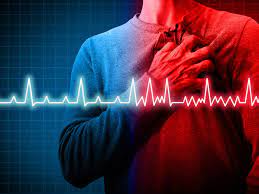
Heart disease remains a leading cause of death, claiming nearly 18 million lives annually. Many of these fatalities could have been prevented with timely medical intervention. Often, individuals misinterpret the warning signs of heart problems, allowing the disease to progress unchecked. To reduce the risk of developing a severe heart condition, recognizing early signs is crucial. If you experience any of the following signs, seeking consultation with a heart doctor is imperative:
1. Chest Pain or Discomfort: One of the most alarming indicators is chest pain or discomfort. This sensation, often described as crushing or squeezing, may radiate to the arm, neck, jaw, or back. While not all chest pain is heart-related, any unexplained or severe discomfort should be taken seriously. It could signify angina or even a heart attack.
2. High Blood Pressure: Consistently high blood pressure (hypertension) is a significant risk factor for heart disease. Regular monitoring and management by a cardiologist are essential for preventing heart-related complications.
3. Diabetes: Diabetes is another risk factor for heart disease. Individuals with diabetes should be vigilant about their heart health and consider regular check-ups with a cardiologist.
4. High Cholesterol: Elevated cholesterol levels can contribute to atherosclerosis, the buildup of fatty deposits in arteries, potentially leading to heart disease. A cardiologist can help manage cholesterol levels and assess overall cardiovascular risk.
5. Shortness of Breath: Persistent shortness of breath during physical activity, at rest, or when lying down could indicate heart failure, a condition where the heart can’t pump blood effectively, leading to lung fluid buildup.
6. Swelling: Unexplained swelling in the legs, ankles, feet, or abdomen may signal heart failure. Weakened heart muscles can impede efficient blood circulation, causing fluid retention. A heart doctor can diagnose and recommend treatment for the underlying cause.
7. Leg Pain: Severe leg pain or cramping, especially during physical activity, could be a sign of peripheral artery disease (PAD), indicating reduced blood flow to the legs. A cardiologist can diagnose and treat PAD to improve blood circulation.
8. Dizziness or Fainting: Frequent dizziness, lightheadedness, or fainting spells may result from inadequate blood flow to the brain, possibly due to various cardiac issues. A cardiologist can evaluate heart function and provide guidance for managing these symptoms.
9. Cyanosis: Cyanosis, a bluish discoloration of the lips, nails, or extremities, may indicate poor circulation or oxygenation in the blood, highlighting a serious heart or lung problem requiring immediate medical attention.
Identifying these signs promptly and consulting a heart doctor can significantly enhance your chances of preventing or managing heart-related issues. Don’t delay seeking medical attention when these symptoms arise; your heart health is paramount.